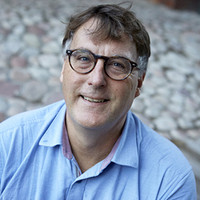When we run out of land, it’s time for ‘blue proteins’

When Fredrik Gröndahl looks at the sea, he sees the potential to relieve humanity of its near-total, and increasingly unsustainable reliance on arable land. The answer to feeding the world is to turn to industrial-scale seaweed farming.

“This is part of the protein shift that everyone is talking about,” Gröndahl says. “By 2050 there will be 11 billion people on Earth and we will need to go for these real proteins, these blue proteins."
For more than a decade the KTH associate professor has devoted his research to transitioning to sea agriculture. He is one of the founders of Nordic Seafarm, the commercial spin-off from Seafarm, a Swedish FORMAS-funded project based at KTH that helps to commercialize aquaculture research; and he leads the Centre for Future Seafood, Blue Food at KTH. Blue Food involves 70 partners, including multiple universities and a broad range of scientific disciplines and businesses.

Now Gröndahl is working with chefs and food companies to put seaweed on more plates in Sweden, and beyond.
Nordic Seafarm is producing sugar kelp, for products such as crisp bread, beer and gin, while Blue Food researchers have been exploring the potential of Sweden’s coastal waters as an industrial-scale source of nutrition, working with all types of marine protein sources.
Gröndahl’s aim is to develop seaweed beyond its most common—and minor—roles in the West as a supplement, flavor enhancer or food stabilizer. It’s easy to grow, it’s nutritious – and it’s low-impact on the environment, so it makes sense to incorporate it into food products and recipes, he says.
“Seaweed is one of the few plants that actually be a complement to the forest or agriculture of Sweden,” he says. “Algae beds are the forests of the sea and they grow very fast, so there is a capacity to develop it on an industrial scale—because 71 percent of the planet is blue.”
The dietary benefits of seaweed are no secret in Asia. It’s a staple in Japan, where it is used in nearly one-fifth of all meals consumed, providing a source of protein, magnesium, potassium, iron and other nutrients.
In recent months the Blue Food team has been collaborating directly with chefs at leading Scandinavian restaurants such as Fotografiska and Raw, as well as kitchens serving school cafeterias and senior centers. Gröndahl and his colleagues also have been a major global restaurant chain that is interested in incorporating seaweed into its recipes.
“But to get these out you have to scale up production in the sea,” he says. Seafarm has been developed the industrial expertise on a smaller scale, but permitting processes and restrictions for using coastal waters have complicated scaling up.
A 30-hectare farm off the west coast of Sweden and a biorefinery serve as Seafarm’s base. Around these platforms scientists from different fields and universities converge to develop more innovative ways to use seaweed, not just for food but also energy, materials and fertilizers.
The exploration of seaweed’s many benefits have proven compelling for industries, he says. “If we want to have a sustainable future, we just need to use the sea.”
David Callahan
